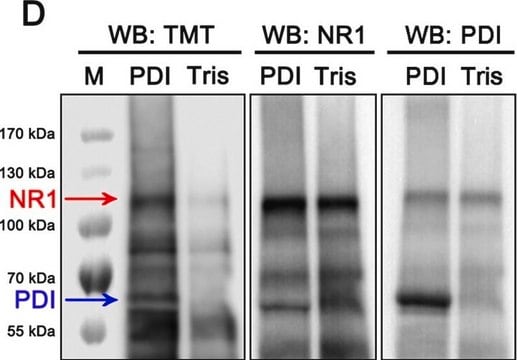Kluczowe dokumenty
R0658
RN-1734
≥98% (HPLC)
Synonim(y):
2,4-Dichloro-N-isopropyl-N-(2-isopropylaminoethyl)benzenesulfonamide
Wybierz wielkość
355,00 zł
Wybierz wielkość
About This Item
355,00 zł
Polecane produkty
Poziom jakości
Próba
≥98% (HPLC)
Formularz
powder
kolor
white to off-white
rozpuszczalność
DMSO: >20 mg/mL
temp. przechowywania
2-8°C
ciąg SMILES
ClC1=C(S(N(C(C)C)CCNC(C)C)(=O)=O)C=CC(Cl)=C1
InChI
1S/C14H22Cl2N2O2S/c1-10(2)17-7-8-18(11(3)4)21(19,20)14-6-5-12(15)9-13(14)16/h5-6,9-11,17H,7-8H2,1-4H3
Klucz InChI
IHYZMEAZAIFMTN-UHFFFAOYSA-N
Zastosowanie
Działania biochem./fizjol.
Kod klasy składowania
11 - Combustible Solids
Klasa zagrożenia wodnego (WGK)
nwg
Temperatura zapłonu (°F)
Not applicable
Temperatura zapłonu (°C)
Not applicable
Wybierz jedną z najnowszych wersji:
Certyfikaty analizy (CoA)
Nie widzisz odpowiedniej wersji?
Jeśli potrzebujesz konkretnej wersji, możesz wyszukać konkretny certyfikat według numeru partii lub serii.
Masz już ten produkt?
Dokumenty związane z niedawno zakupionymi produktami zostały zamieszczone w Bibliotece dokumentów.
Klienci oglądali również te produkty
Produkty
We offer many products related to transient receptor potential channels for your research needs.
Active Filters
Nasz zespół naukowców ma doświadczenie we wszystkich obszarach badań, w tym w naukach przyrodniczych, materiałoznawstwie, syntezie chemicznej, chromatografii, analityce i wielu innych dziedzinach.
Skontaktuj się z zespołem ds. pomocy technicznej










